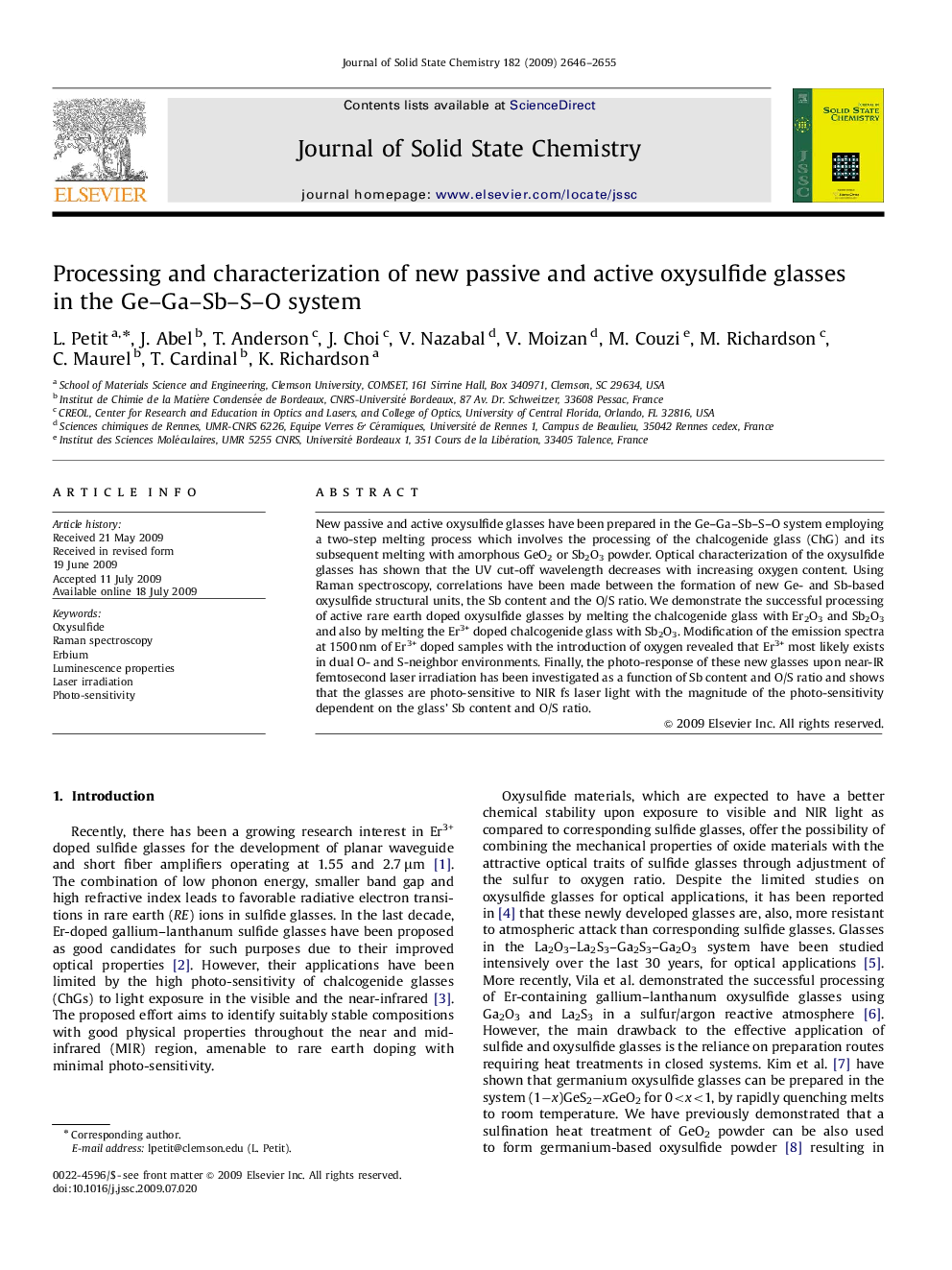| Article ID | Journal | Published Year | Pages | File Type |
|---|---|---|---|---|
| 1330944 | Journal of Solid State Chemistry | 2009 | 10 Pages |
New passive and active oxysulfide glasses have been prepared in the Ge–Ga–Sb–S–O system employing a two-step melting process which involves the processing of the chalcogenide glass (ChG) and its subsequent melting with amorphous GeO2 or Sb2O3 powder. Optical characterization of the oxysulfide glasses has shown that the UV cut-off wavelength decreases with increasing oxygen content. Using Raman spectroscopy, correlations have been made between the formation of new Ge- and Sb-based oxysulfide structural units, the Sb content and the O/S ratio. We demonstrate the successful processing of active rare earth doped oxysulfide glasses by melting the chalcogenide glass with Er2O3 and Sb2O3 and also by melting the Er3+ doped chalcogenide glass with Sb2O3. Modification of the emission spectra at 1500 nm of Er3+ doped samples with the introduction of oxygen revealed that Er3+ most likely exists in dual O- and S-neighbor environments. Finally, the photo-response of these new glasses upon near-IR femtosecond laser irradiation has been investigated as a function of Sb content and O/S ratio and shows that the glasses are photo-sensitive to NIR fs laser light with the magnitude of the photo-sensitivity dependent on the glass’ Sb content and O/S ratio.
Graphical abstractIn this paper, we demonstrate the successful processing of active rare earth doped oxysulfide glasses by melting the chalcogenide glass with Er2O3 and Sb2O3 but also by melting the Er3+ doped chalcogenide glass with Sb2O3. These new glasses were found to be photo-sensitive to near-IR femtosecond laser irradiation and to exhibit a surface photo-expansion after laser irradiation which remains, as expected, lower than similar response seen for oxygen-free chalcogenide glasses.Figure optionsDownload full-size imageDownload as PowerPoint slide
